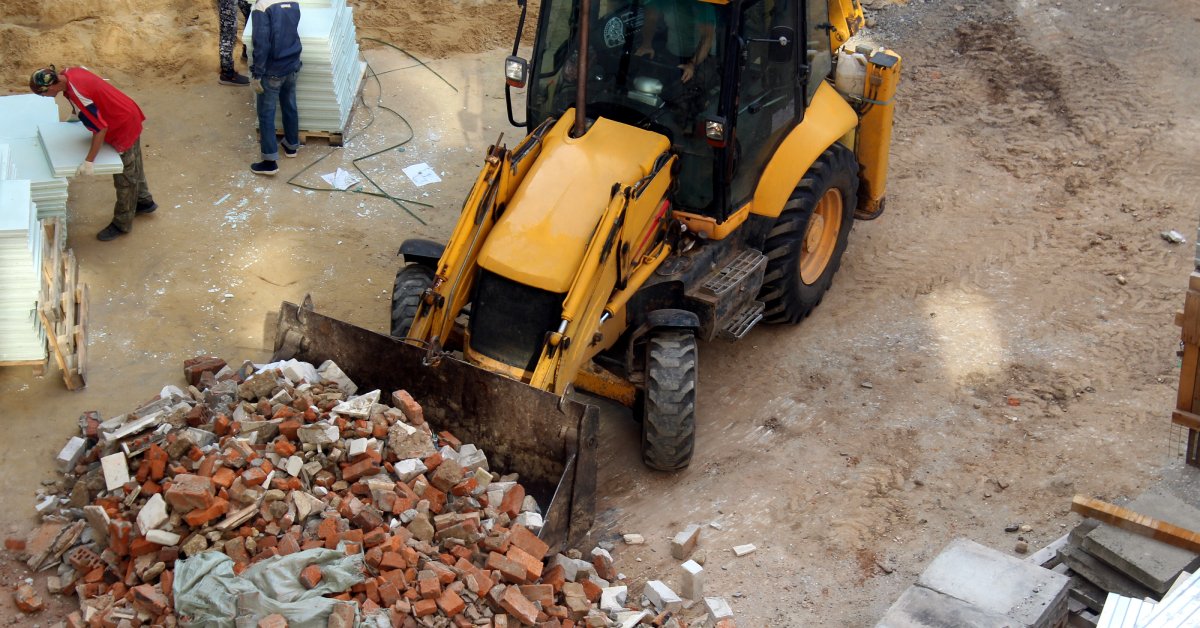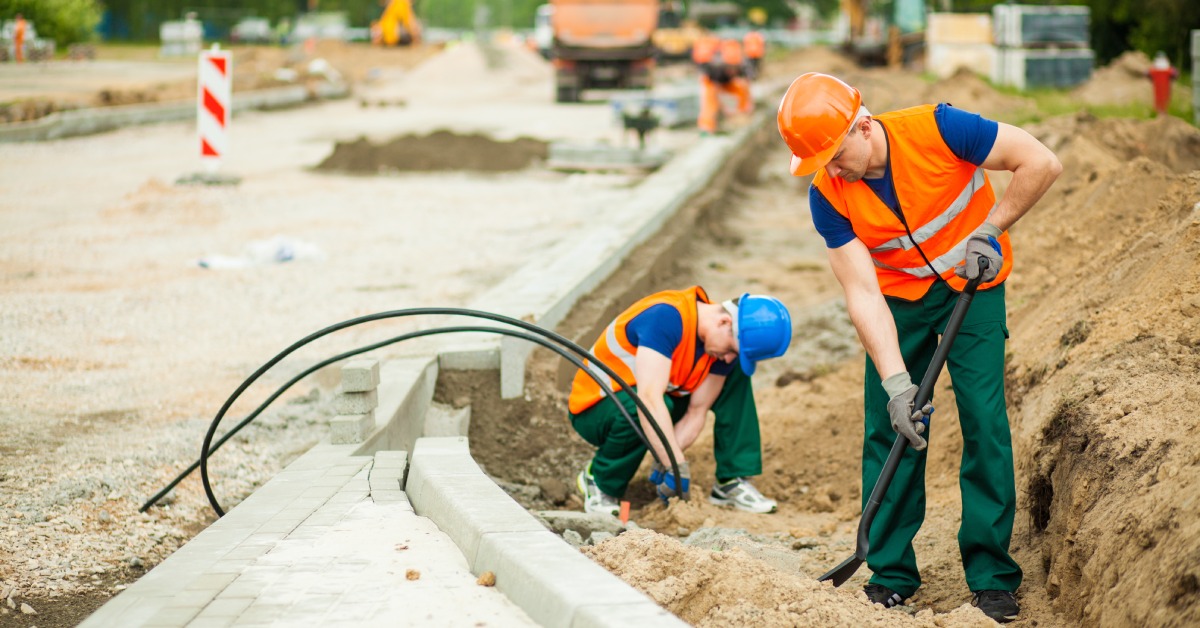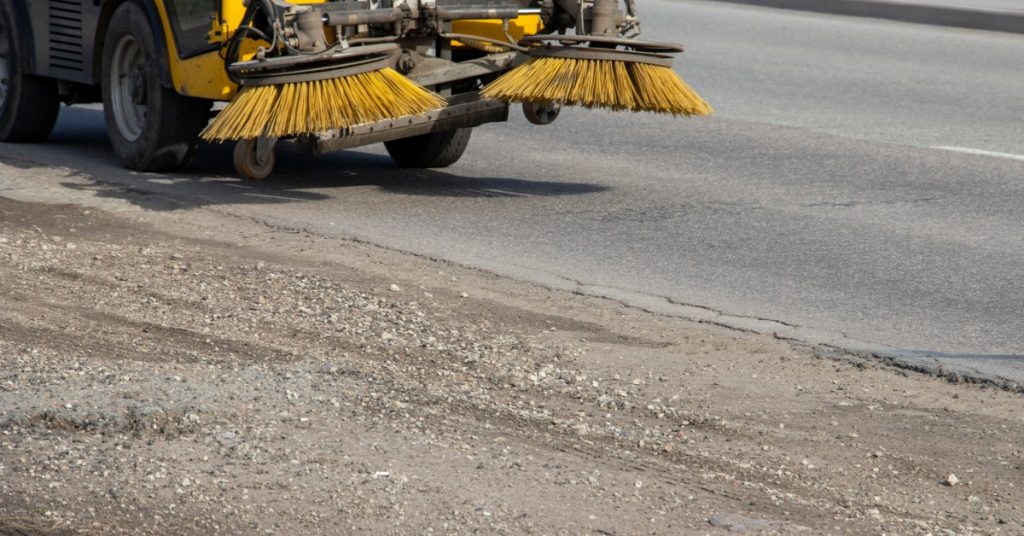Keeping a construction site clean is essential for many reasons. For example, it helps to maintain a professional appearance and ensures the safety of workers and visitors. CPM Sweeping is here today with some helpful tips for safely sweeping your construction site. Keeping it clear of loose debris can make a world of difference and keep things safe and organized.
Understanding the Importance of Site Cleanliness
Maintaining a clean construction site isn’t just about aesthetics but maintaining workplace safety and efficiency. Clean sites reduce the risk of accidents caused by tripping over debris or slipping on wet surfaces, thus safeguarding the well-being of workers and visitors.
An organized site maintains a smooth workflow, enabling workers to move freely and locate tools and materials easily, which can lead to increased productivity. Maintaining cleanliness on a construction site can prevent damage to equipment and materials, saving costs on replacements and repairs.
Preparing Your Team for Cleanup Operations
Effective cleanup operations on a construction site start with thorough preparation and clear communication among all team members. Begin by scheduling regular training sessions to educate workers on the importance of site cleanliness and the best practices for maintaining it.
Emphasize the use of personal protective equipment (PPE) such as gloves, hard hats, and safety glasses to prevent injuries during cleanup tasks.
Next, assign specific roles and responsibilities to each team member, ensuring that everyone knows their duties and the areas they are accountable for. Maintaining an organized approach covers all parts of the site efficiently and reduces the chances of overlooked spots.
Additionally, equip your team with the necessary tools and materials for cleanup, such as brooms, shovels, dustpans, and industrial waste bags.
On top of having all the right equipment, fostering a culture of accountability and teamwork can make things better around your site. Encourage your workers to report any hazards or obstacles they encounter during their cleanup routines. By preparing your team and building a collaborative environment, you can ensure that they perform cleanup operations safely and effectively.

Always Use the Right Tools and Equipment
Using the appropriate tools and equipment is crucial for maintaining cleanliness and safety on a construction site. Selecting the right tool for each task streamlines the cleanup process and minimizes the risk of injury. For example, using heavy-duty brooms and industrial-grade vacuums can take care of debris and dust while ensuring robust and efficient cleaning.
Specialty tools, such as magnetic sweepers, are invaluable for picking up nails and other metal fragments, reducing the risk of puncture wounds or tire damage. By clearing out metal, there’s far less risk of personal injury or damage to your equipment.
When it comes to handling hazardous materials, you need to use the right equipment for that purpose. You may need to bring in specialized containers to throw out chemical waste or separate bins for sharp objects.
Using the wrong equipment can lead to spillage, contamination, or injury, which highlights the importance of adhering to proper protocols.
Beyond physical tools, workers must wear PPE, such as gloves, respiratory masks, and safety goggles, during cleanup operations. PPE acts as a critical barrier against exposure to harmful substances and physical injuries.
When operating a construction site over a prolonged period, remember to regularly inspect and maintain your tools and PPE. Damaged or worn-out equipment may cause more problems and be just as dangerous as using the wrong tools in the first place.

Implement a Regular Sweeping Schedule
One of the most helpful tips for safely sweeping your construction site is to create a consistent and regular sweeping schedule. This schedule ensures that you promptly address debris and hazards, preventing the buildup of materials that could pose safety risks or hinder operations.
Begin by assessing the specific needs of your site, considering factors such as the scale of the project, the number of workers, and the types of materials that you’re using.
Once you have a clear understanding of the site’s requirements, develop a sweeping timetable that includes daily, weekly, and monthly tasks. Daily sweeping should focus on high-traffic areas and locations where dust and debris accumulate quickly.
Weekly tasks can include more thorough sweeps of the entire site, targeting less frequently used areas and ensuring that you don’t neglect any major spots. Monthly cleanups should involve deep cleaning processes, such as pressure washing surfaces and performing maintenance on cleanup equipment.
Part of creating the schedule involves assigning dedicated personnel to the sweeping tasks, ensuring that everyone understands their responsibilities and the importance of adhering to the schedule. Use checklists and logs to track progress and identify areas that may need additional attention.
Monitor and Evaluate Cleanup Efforts
Monitoring and evaluating cleanup efforts is a critical aspect of maintaining a safe and organized construction site. Consistent oversight ensures that employees follow cleanliness standards and enables prompt identification of any shortcomings in the process.
You should start by establishing clear performance metrics for your cleanup operations, such as frequency of completed tasks, adherence to schedules, and overall site condition. Use these metrics to create benchmarks to gauge success and identify areas for improvement.
You may also need to consult regular site inspections to assess the effectiveness of cleanup efforts. During these inspections, pay close attention to high-risk areas where debris and hazards are most likely to accumulate.
Document findings using checklists and take immediate action to address any issues discovered. This ensures ongoing compliance with safety standards and demonstrates a commitment to site cleanliness and worker safety.
In addition to inspection routines, gather feedback from your team members, as they are often the first to notice problems or inefficiencies. Encourage open communication and make it easy for workers to report any concerns related to site cleanliness without fear of repercussion.
Ready to elevate the cleanliness and safety of your construction site? Partner with CPM Sweeping today! With our expert team and state-of-the-art equipment, we provide commercial street sweeping services that ensure your site stays immaculate and compliant with all safety regulations. Contact CPM Sweeping today to create a customized cleanup plan tailored to your specific needs.

